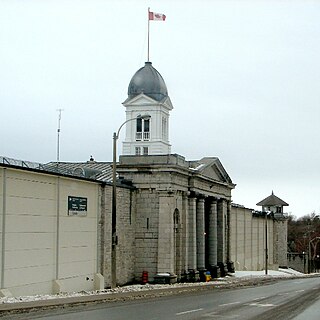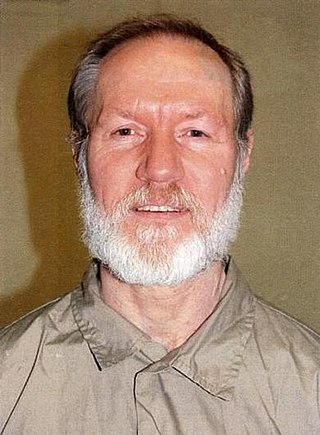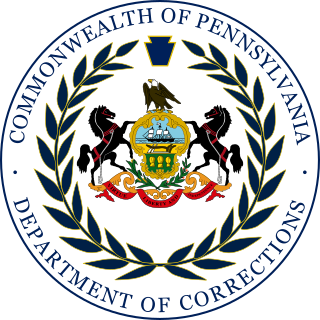Related Research Articles

Kingston Penitentiary is a former maximum security prison located in Kingston, Ontario, Canada, between King Street West and Lake Ontario.

The Attica Prison Riot, also known as the Attica Prison Rebellion, the Attica Uprising, or the Attica Prison Massacre, took place at the state prison in Attica, New York; it started on September 9, 1971, and ended on September 13 with the highest number of fatalities in the history of United States prison uprisings. Of the 43 men who died, all but one guard and three inmates were killed by law enforcement gunfire when the state retook control of the prison on the final day of the uprising. The Attica Uprising has been described as a historic event in the prisoners' rights movement.

The New Mexico State Penitentiary riot, which took place on February 2 and 3, 1980, at the Penitentiary of New Mexico (PNM) south of Santa Fe, was the most violent prison riot in U.S. history. Inmates took complete control of the prison and twelve officers were taken hostage. Several inmates were killed by other prisoners, with some being tortured and mutilated because they had previously acted as informants for prison authorities. Police regained control of PNM 36 hours after the riots had begun. By then, thirty-three inmates had died and more than two hundred were treated for injuries. None of the twelve officers taken hostage were killed, but seven suffered serious injuries caused by beatings and rapes.
Roger "Mad Dog" Caron was a Canadian robber and the author of the influential prison memoir Go-Boy! Memories of a Life Behind Bars (1978). At the time of publishing, Caron was 39 years old and had spent 23 years in prison.
Millhaven Institution is a maximum security prison located in Bath, Ontario. Approximately 500 inmates are incarcerated at Millhaven.

Oregon State Penitentiary (OSP), also known as Oregon State Prison, is a maximum security prison in the northwest United States in Salem, Oregon. Originally opened in Portland 172 years ago in 1851, it relocated to Salem fifteen years later. The 2,242-capacity prison is the oldest in the state; the all-male facility is operated by the Oregon Department of Corrections (ODOC). OSP contains an intensive management wing, which is being transformed into a psychiatric facility for mentally ill prisoners throughout Oregon.

Thomas Edward Silverstein was an American criminal who spent the last 42 years of his life in prison after being convicted of four separate murders while imprisoned for armed robbery, one of which was overturned. Silverstein spent the last 36 years of his life in solitary confinement for killing Corrections Officer Merle Clutts at the Marion Penitentiary in Illinois. Prison authorities described him as a brutal killer and a former leader of the Aryan Brotherhood prison gang. Silverstein maintained that the dehumanizing conditions inside the prison system contributed to the three murders he committed. He was held "in a specially designed cell" in what is called "Range 13" at ADX Florence federal penitentiary in Colorado. He was the longest-held prisoner in solitary confinement within the Bureau of Prisons at the time of his death. Correctional officers refused to talk to Silverstein out of respect for Clutts.

Menard Correctional Center, known prior to 1970 as Southern Illinois Penitentiary, is an Illinois state prison located in the town of Chester in Randolph County, Illinois. It houses maximum-security and high medium-security adult males. The average daily population as of 2007 is 3,410.
The Atlanta prison riots were a series of prison riots that occurred at the U.S. Penitentiary in Atlanta, Georgia, United States in November 1987. The riot coincided with a similar riot at the Federal Detention Center in Oakdale, Louisiana.
Weldon Lynn Kennedy was a special agent for the Federal Bureau of Investigation and served for 33 years. He is known for negotiating a peaceful end to the Atlanta Prison Riots and his involvement in the investigation of the Oklahoma City bombing. He retired as the FBI's No. 2 in command, Deputy Director, in February 1997.

The Montana State Prison is a men's correctional facility of the Montana Department of Corrections in unincorporated Powell County, Montana, about 3.5 miles (5.6 km) west of Deer Lodge. The current facility was constructed between 1974 and 1979 in response to the continued degeneration of the original facility located in downtown Deer Lodge.

The State Correctional Institution (SCI) at Camp Hill, commonly referred to as SCI Camp Hill, is a Pennsylvania Department of Corrections prison in Lower Allen Township, Cumberland County, near Camp Hill in Greater Harrisburg. Its current superintendent is Laurel Harry. It has around 3,400 inmates.
The British Columbia Penitentiary was a federal maximum security prison located in New Westminster, British Columbia, Canada. The BC Penitentiary operated for 102 years, from 1878 until it was decommissioned in 1980. It was the first federal penal institution west of Manitoba. The Gatehouse was sold on September 8,2021 and was renamed Governors Castle by new owners. Colliers international Appraised the Building at $8,950,000, additional open space for $4,500,00, totalling $13,450,000 at time of purchase by Governors Court Inc.

Collins Bay Institution is a multilevel correctional facility in Kingston, Ontario, Canada, and falls under the supervision of Correctional Services of Canada. The facility was opened in 1930, and is now the oldest operational federal penitentiary in Ontario. The main prison is medium security, with a minimum security facility residing on the same property. A 96-bed maximum security unit is also operational.
Ernest Adolphe Côté, was a Canadian soldier, diplomat and civil servant.
Brian Leslie Beaucage, better known as "Bo" Beaucage, was a Canadian gangster, outlaw biker and convicted criminal best known as the one of the leaders of the 1971 Kingston Penitentiary riot. His plea bargain with the Crown in 1971 is one of the most controversial plea bargains in Canadian legal history.
The Kingston Penitentiary riot of 1971 refers to a prison riot that took place at Kingston Penitentiary, in Ontario, Canada, between 14 and 18 April 1971.
William James "Billy" Knight was a Canadian criminal who served as the leader of the 1971 Kingston Penitentiary riot.
Ronald Bancroft Haggart was a Canadian journalist.
Wayne Ford, better as "Big Wayne" is a Canadian criminal whose matricide is one of the best known murders committed in Toronto. Ford served as one of the leaders of the 1971 Kingston Penitentiary riot.
References
- 1 2 3 4 5 Fogarty 2021, p. 99.
- ↑ Fogarty 2021, p. 99 & 117.
- ↑ Fogarty 2021, p. 91.
- 1 2 3 4 Fogarty 2021, p. 117.
- ↑ Fogarty 2021, p. 54.
- ↑ Fogarty 2021, p. 55.
- ↑ Fogarty 2021, p. 74.
- ↑ Caron 1985, p. 114.
- ↑ Caron 1985, p. 115.
- ↑ Fogarty 2021, p. 112.
- 1 2 Fogarty 2021, p. 103-104.
- ↑ Caron 1985, p. 149.
- ↑ Fogarty 2021, p. 104.
- 1 2 3 4 5 Fogarty 2021, p. 118.
- ↑ Fogarty 2021, p. 119-120.
- ↑ Fogarty 2021, p. 119.
- 1 2 3 4 Fogarty 2021, p. 122.
- 1 2 3 Fogarty 2021, p. 129.
- ↑ Caron 1985, p. 173.
- ↑ Fogarty 2021, p. 133-134.
- 1 2 3 4 5 6 7 Fogarty 2021, p. 136.
- ↑ Fogarty 2021, p. 137.
- ↑ Fogarty 2021, p. 138-143.
- ↑ Fogarty 2021, p. 147-148.
- 1 2 3 Fogarty 2021, p. 147.
- 1 2 3 4 5 Fogarty 2021, p. 148.
- 1 2 3 4 5 Buckler, Grant (29 January 2013). "Review of Cool Heads at Kingston Pen". JSource. Retrieved 23 July 2023.
- ↑ Caron 1985, p. 198.
- 1 2 3 4 5 6 Fogarty 2021, p. 149.
- ↑ Fogarty 2021, p. 150.
- 1 2 Fogarty 2021, p. 153.
- ↑ Fogarty 2021, p. 153-154.
- 1 2 3 Fogarty 2021, p. 154.
- ↑ Fogarty 2021, p. 162.
- ↑ Fogarty 2021, p. 163.
- ↑ Paikin, Steve (14 April 2021). "Looking back on the shocking Kingston Pen riot of 1971". TV Ontario. Retrieved 23 July 2023.
- ↑ Fogarty 2021, p. 166-167.
- 1 2 3 4 Fogarty 2021, p. 289.
- 1 2 Fogarty 2021, p. 290.